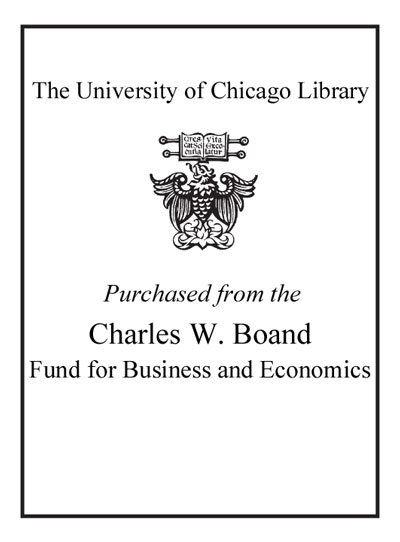Re-thinking the network economy : the true forces that drive the digital marketplace /
Saved in:
| Author / Creator: | Liebowitz, S. J., 1950- |
|---|---|
| Imprint: | New York : AMACOM, c2002. |
| Description: | xii, 224 p. : ill. ; 24 cm. |
| Language: | English |
| Subject: | |
| Format: | Print Book |
| URL for this record: | http://pi.lib.uchicago.edu/1001/cat/bib/4753188 |
Table of Contents:
- Preface
- Chapter 1. Introduction
- What You Will Find in Later Chapters
- Chapter 2. Basic Economics of the Internet
- How the Internet Creates Value
- Special Economics of the Internet--or Maybe Not So Special
- Network Effects
- Economies of Scale
- Winner-Take-All
- How the Internet Alters the Likelihood of Winner-Take-All
- Chapter 3. Racing to Be First: Faddish and Foolish
- From Winner-Take-All to First-Mover-Wins
- The Concept of Lock-In
- Strong Lock-In
- Weak Lock-In
- Impacts of Lock-In on First-Mover-Wins
- What Does the Real World Tell Us About Strong Lock-In?
- The Internet and First-Mover-Wins
- Additional Evidence
- Business Lessons
- Chapter 4. The (Non) Ubiquity of E-Tailing?
- How Might the Internet Transform Business? E-Ordering vs. E-Tailing
- Characteristics of Products That Are Likely to Determine the Extent of the Internet Transformation
- Size and Bulk Relative to Value
- Immediate Gratification Factor (Impulse Buying)
- Perishability
- Experience Products and Free-Riding
- Thin Markets
- The Role of Taxes
- What Types of Products Are Most Compatible with Full-Fledged E-Tailing?
- Digitized Products
- Information
- Books and CDs
- Examples of Markets Likely to Resist the Internet Assault
- Grocery Items
- Automobiles
- Furniture
- Prescription Drugs
- The Nature of Selling on the Net
- The Evolution of the Current Pricing System
- The Concept of Price Discrimination
- What About Auctions?
- Chapter 5. The Value-Profit Paradox: The Cruelty of Competition and Internet Margins
- The Diamond-Water Paradox
- The Cruelty of Competition and Attempts to Subvert It
- Implications for Internet Companies
- Future Competition and Performance
- Margins and Profits on the Net
- Understanding Profit Margins
- The Nature of Competition in Internet Markets
- Chapter 6. Can Advertising Revenues Support the Net?
- The Inadequacy of the Television Model
- Advertising Effectiveness on the Internet
- Size of Audience
- Advertising Effectiveness on the Net
- Advertising Budgets
- Positive Aspects of Internet Advertising
- Advertising Revenues on the Internet
- Chapter 7. Copyright and the Internet
- The Economic Impacts of Copying
- Direct Economic Effects of Copying Technology
- Indirect Economic Effects of Copying Technology
- The Economic Impacts of Previous New Technologies on Copyright Owners
- Photocopying
- Videocassette Recording: The Betamax Case
- Audiotaping
- Digitized Networked Copying: Lessons from the Napster Case
- The Impact of Peer-to-Peer Networks on Revenues--The Theory
- Indirect Appropriability
- Exposure Effects
- The Impact of Napster on Revenues--The Evidence
- Pure Peer-to-Peer Technologies: The Devil You Don't Know
- Digital Rights Management
- DRM Will Not Harm "Fair" Use or Any Use
- DRM Will Not Reduce Production of New Works
- Public Goods, DRM, and Other Alternatives
- The Bottom Line
- Chapter 8. Conclusion: Whither Supply and Demand?
- Lessons
- Index

